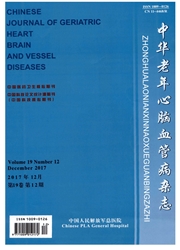

 中文摘要:
中文摘要:
目的探索性建立基层医疗机构阿尔茨海默病(Alzheimer’s disease,AD)辅助识别系统。方法对50例AD患者、44例轻度认知功能障碍(mild cognitive impairment,MCI)患者及46名正常老年人进行一系列神经心理量表测试,以神经心理量表的认知分项作为条件属性,以最终诊断作为决策属性,按照不降低识别精确度为原则,应用粗糙集理论遗传算法将各条件属性进行约简,以约简后结果为基础,利用贝叶斯概率推理模型,建立AD辅助识别系统,并应用10折交叉验证方法对该系统进行反复验证。结果约简结果为10项,包括简易智能精神状态检查量表中的三步命令;蒙特利尔认知评估量表中的视空间与执行功能、命名、注意,图形记忆中的图形复制、即刻回忆及延迟回忆;听觉词语学习测验的即刻记忆及延迟回忆;工具性日常生活活动能力测试。将此10项的原始数据为基础,建立AD网络辅助识别系统。结论 AD网络辅助识别系统简单、有效、易于推广,有利于提高基层医疗机构AD的识别率。
 英文摘要:
英文摘要:
Objective To establish automatic system for assistant recognition of Alzheimer 's disease(AD) initially. Methods50 AD patients,44 MCI patients and 46 normal controls underwent a neuropsychological test battery. 34 subtests 'data was reduced based on the rough set theory,and the results were used to establish automatic recognition system of Alzheimer 's disease based on Bayesian network. Results The results of the subtraction including the followed :3-stage command subtest in MMSE;visualspacial and executive function, naming and attention subtests in Mo CA;Complex figure test; immediate recall and delayed recall in AVLT test; IADL. Based on the above results,an automatic recognition system was established and tested. Conclusion The automatic recognition system for AD may be useful for recognizing AD especially for primary hospitals.
 同期刊论文项目
同期刊论文项目
 同项目期刊论文
同项目期刊论文
 Identification of conversion from mild cognitive impairment to Alzheimer's disease using multivariat
Identification of conversion from mild cognitive impairment to Alzheimer's disease using multivariat Functional Connectivity of New Supplement of Limbic System, Marginal Division, Affected in Alzheimer
Functional Connectivity of New Supplement of Limbic System, Marginal Division, Affected in Alzheimer Age of onset of blindness affects brain anatomical networks constructed using diffusion tensor tract
Age of onset of blindness affects brain anatomical networks constructed using diffusion tensor tract Altered spontaneous activity in Alzheimer's disease and mild cognitive impairment revealed by Region
Altered spontaneous activity in Alzheimer's disease and mild cognitive impairment revealed by Region Impaired Long Distance Functional Connectivity and Weighted Network Architecture in Alzheimer's Dise
Impaired Long Distance Functional Connectivity and Weighted Network Architecture in Alzheimer's Dise 期刊信息
期刊信息
